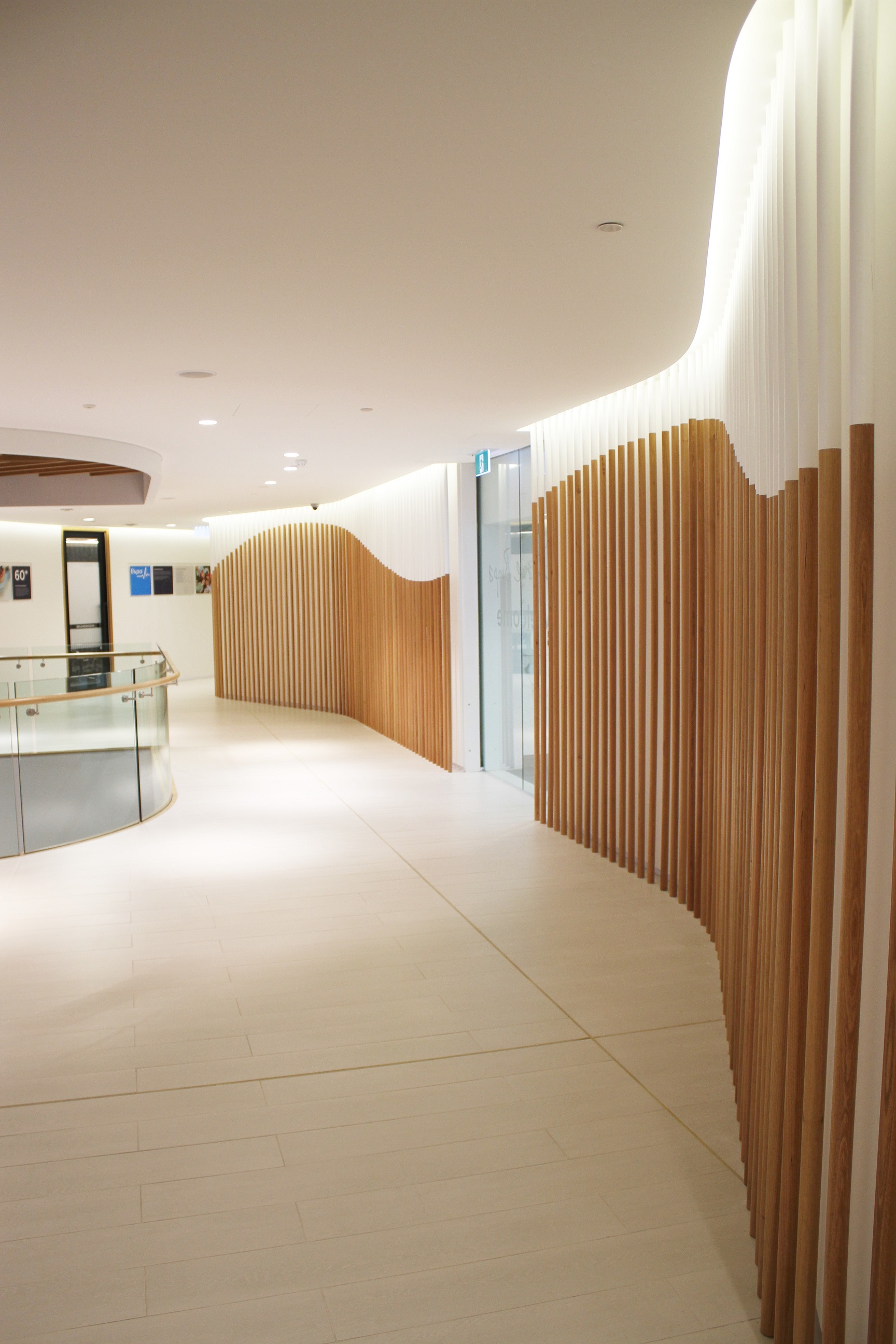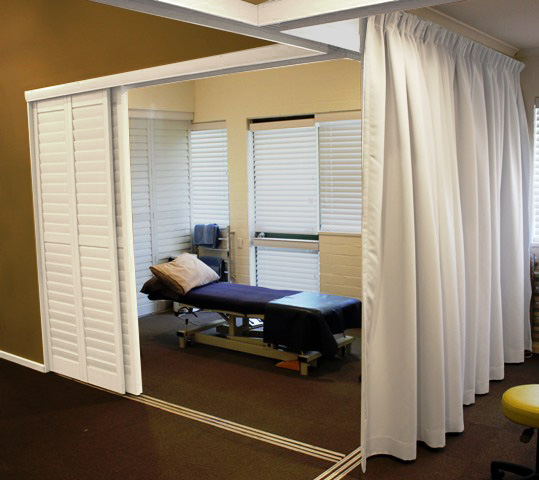Acoustic sound reduction can be applied at any time during or after construction and can be used in a variety of places and various surfaces. Acoustic foam or Acoustic plasterboard ideally would be applied at the construction phase; however retro-fitting is still possible. Acoustic Panels, Acoustic Art, Acoustic curtains, Acoustic pin boards are all products that can be easily applied to any existing room or building. There is an increased trend in most of cities and states of Australia like in Sydney, where people tend to use acoustic underlay and acoustic ceiling tiles in their homes and offices to make sure the interiors have maximum sound reduction from vibrations and sound Echo’s.

Long Curved Walls fitted with 25mm Acoustic Panels
It’s a fact that most of the new buildings have a definite set of such materials installed to comply with the latest standards, but never hesitate to improve the overall sound reduction of the older buildings.
Here are a few suggestions:
You can start inspecting the ceiling. On the ceiling you can use acoustic ceiling tiles. The ceiling is a notorious part of a room to bounce sounds around a room, fixing acoustic tiles will go a long way to reduction overall noise in a room. This will not only improve the sound proofing effect, but also improve the look of the ceiling.
Acoustic foam on the walls and also decorative acoustic art panels will improve the interior look as well as reduce noise. These walls will give an enhanced look and a reduced sound penetrated to the interiors.

Acoustic Art Panels
Acoustic Curtains can also change the esthetics of a room and significantly reduce the levels of unwanted and annoying sound distractions.

Acoustic Curtains
All these acoustic materials will help you renovate an old building and make it up to the level of today’s standards.
Let us show you how to reduce noise in your home or office with effective sound reduction strategies, ask us for a Free Consultation, click here
